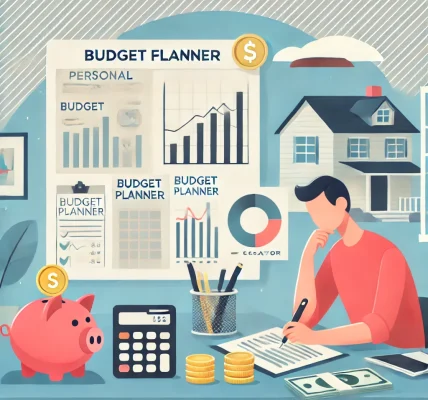Introduction
Taxes are an unavoidable part of financial life, but there are many legal strategies to minimize your tax burden. By leveraging tax deductions, credits, and smart financial planning, individuals and businesses can reduce their tax liabilities while staying compliant with tax laws.
In this guide, we’ll explore various tax-saving strategies, including deductions, tax-advantaged accounts, investment planning, and other legitimate methods to lower your tax burden.
1. Maximize Tax Deductions
Tax deductions reduce your taxable income, thereby lowering the amount of tax you owe. Here are some of the most common deductions you can claim:
a. Standard Deduction vs. Itemized Deductions
- The standard deduction is a fixed amount you can deduct from your income without itemizing expenses.
- Itemized deductions allow you to deduct specific expenses such as medical bills, mortgage interest, and charitable donations if they exceed the standard deduction.
b. Common Itemized Deductions
- Mortgage Interest: Deductible for homeowners who itemize.
- Medical Expenses: If medical costs exceed a certain percentage of your income, they may be deductible.
- Charitable Donations: Contributions to qualified charities can be deducted.
- State and Local Taxes (SALT): You can deduct up to $10,000 in state and local taxes.
- Student Loan Interest: Up to $2,500 can be deducted annually.
2. Take Advantage of Tax Credits
Tax credits directly reduce the amount of taxes you owe, often providing a bigger benefit than deductions.
a. Common Tax Credits
- Child Tax Credit (CTC): Provides up to $2,000 per qualifying child.
- Earned Income Tax Credit (EITC): Helps low-to-moderate income individuals and families.
- Lifetime Learning Credit (LLC): Helps offset education expenses.
- Saver’s Credit: Encourages retirement savings by providing a tax credit for contributions to retirement accounts.
3. Contribute to Tax-Advantaged Accounts
Retirement and health savings accounts offer tax benefits that can significantly reduce taxable income.
a. Retirement Accounts
- 401(k) and 403(b) Plans: Contributions reduce taxable income, and earnings grow tax-free until withdrawal.
- Traditional IRA: Contributions may be tax-deductible, reducing taxable income.
- Roth IRA: Contributions are not tax-deductible, but qualified withdrawals are tax-free.
b. Health Savings Accounts (HSA) and Flexible Spending Accounts (FSA)
- HSA: Contributions are tax-deductible, grow tax-free, and can be withdrawn tax-free for qualified medical expenses.
- FSA: Allows employees to set aside pre-tax dollars for healthcare expenses, reducing taxable income.
4. Utilize Business and Self-Employed Tax Benefits
If you are a business owner or self-employed, there are several ways to reduce your tax burden.
a. Deduct Business Expenses
- Home Office Deduction: If you use a portion of your home exclusively for business, you can deduct related expenses.
- Vehicle and Travel Expenses: Business-related travel and mileage are deductible.
- Office Supplies & Equipment: Computers, office supplies, and business software are deductible.
b. Set Up a Retirement Plan
- SEP IRA: Allows self-employed individuals to contribute up to 25% of their income.
- Solo 401(k): Offers high contribution limits for business owners.
c. Take Advantage of the Qualified Business Income (QBI) Deduction
- This allows eligible self-employed individuals and small business owners to deduct up to 20% of their qualified business income.
5. Optimize Investments for Tax Efficiency
Proper investment planning can help you minimize capital gains taxes and maximize after-tax returns.
a. Tax-Loss Harvesting
- Selling underperforming investments to offset capital gains can reduce tax liability.
b. Long-Term vs. Short-Term Capital Gains
- Long-term capital gains (assets held for more than a year) are taxed at a lower rate than short-term gains.
c. Municipal Bonds
- Interest earned from municipal bonds is often tax-exempt at the federal level and sometimes at the state level.
6. Plan Charitable Giving Strategically
Charitable contributions can provide significant tax savings.
a. Donor-Advised Funds (DAFs)
- Allows you to contribute funds for charitable giving while receiving an immediate tax deduction.
b. Qualified Charitable Distributions (QCDs)
- Individuals over 70½ years old can donate directly from an IRA to a qualified charity, reducing taxable income.
7. Utilize Estate Planning for Tax Efficiency
Effective estate planning can reduce tax liabilities for your heirs.
a. Annual Gift Tax Exclusion
- You can gift up to a certain amount per year per recipient without triggering gift taxes.
b. Trusts and Estate Planning
- Setting up trusts can help minimize estate taxes and ensure assets are distributed efficiently.
8. Review Your Tax Withholding and Estimated Payments
a. Adjust Tax Withholding
- Ensure that you are not overpaying or underpaying taxes by adjusting withholding on your W-4 form.
b. Make Estimated Tax Payments
- If you have freelance or investment income, making quarterly estimated tax payments can help avoid penalties.
Conclusion
Reducing your tax burden legally requires proactive planning and utilizing available tax deductions, credits, and tax-advantaged accounts. By implementing these strategies, you can optimize your tax situation, keep more of your hard-earned money, and achieve greater financial stability.
Always consult with a tax professional or financial advisor to ensure compliance with tax laws and to maximize your tax-saving opportunities.




